Today, I’m working on a live oak (Quercus virginiana).
So called “live” because it is mostly evergreen.
It actually should be called “southern” live oak because I guess there are other kinds of live oak out there (Texas live oak or sand live oak). But depending on who you talk to, some just think those are a variety of quercus virginiana, or, because oaks are, like, total whores (omg), those other live oaks are bastards (or hybrids, if you prefer) of the virginiana and another oak, say laurel or scrub oak.
The live oak does lose it’s leaves like other deciduous trees; it just happens in a week and it flowers in between the leaf drop and the new leaf growth.
This one hasn’t dropped it’s leaves yet so I defoliated it to help it along.
And to make it easier to wire.

Of course, you’re wondering why I collected such an insignificant tree (I dug it out last year).
And when guy Guidry saw this ugly thing he said “Why didn’t you cut it down to about here when you collected it?”
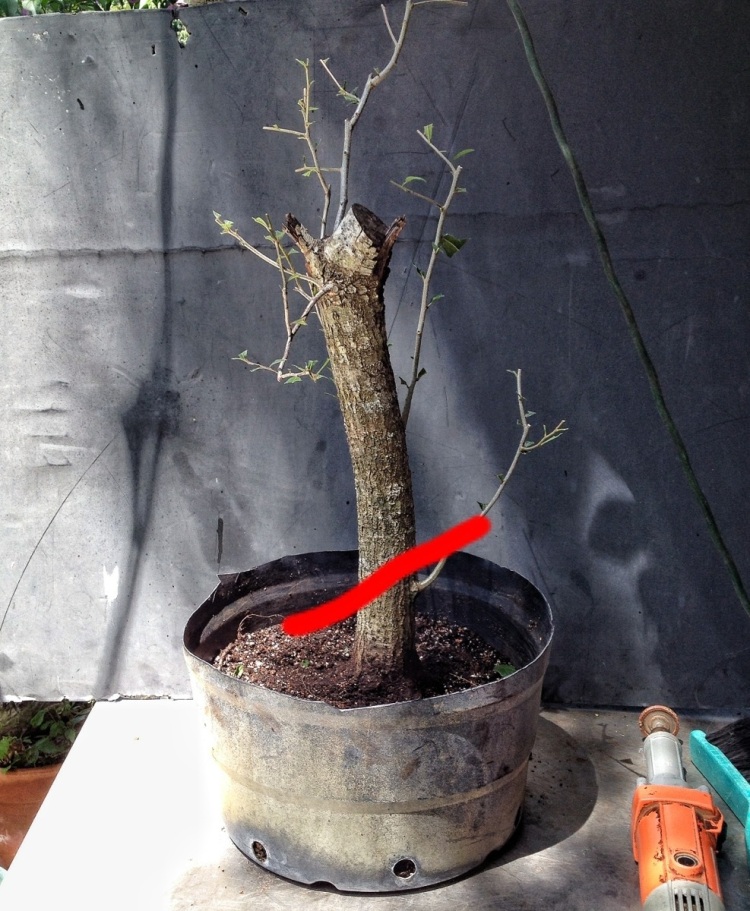
Granted, it has very little taper and it would have made a nice little pig…..but, do you see that orange and grey tool to the right?
I’m a carver.
And because I’m a carver, I liked the height, the odd knob on top, and the understated (or reverse) taper.
You can’t carve if there’s no wood to carve on now, can you?
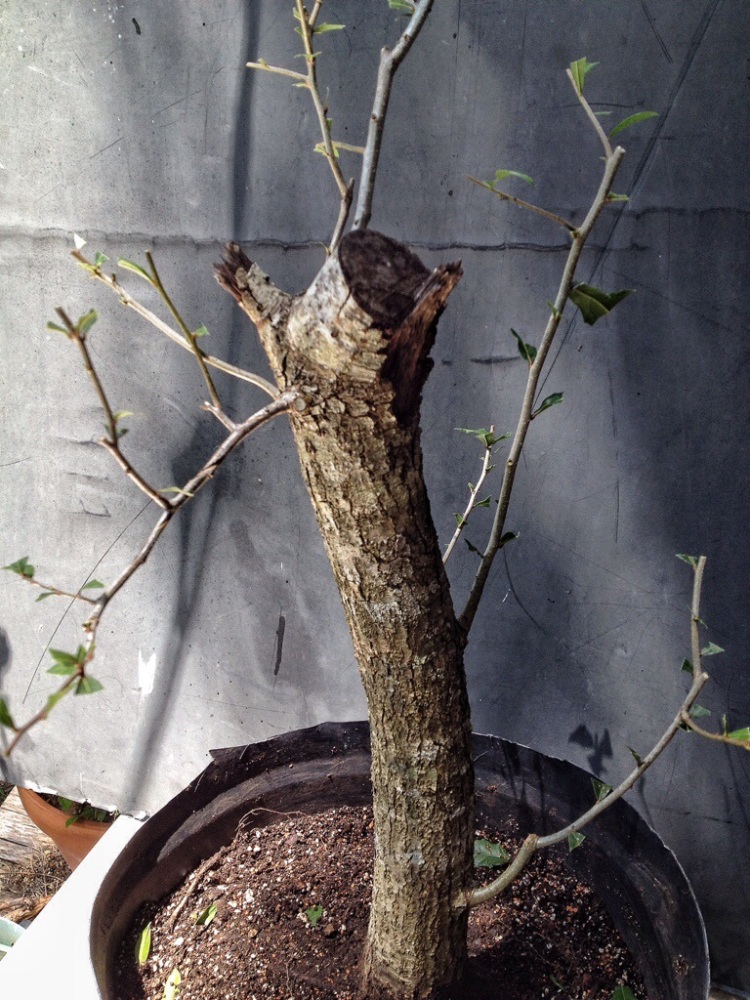
In case you’ve never seen the southern live oak, here are the leaves:

I know what you’re thinking, those leaves are very un-oak-like.
I’m not sure what leaf shape has to do with anything but I’m sure there are advantages to those shapes.
Ok, a quick google search tells us that leaf shape is dependent on the distribution of the leaf veins, which, in turn, has to do with the environmental conditions in which it evolved in and the actions of carbon collection and transpiration.
That cleared it up, huh?
Basically, there is a mathematical model that can predict leaf shape but it’s still not known why a tree has one shape over another.
Everyone has a theory but no one has the answer.
Even the guy who came up with the formula.
Anyway, notwithstanding the leaf shape which vacillates between a simple elliptical to ovate to oblonceolate and exhibiting entire or sometimes dentate margins, this is the oak tree we see in our minds eye, in Florida, when we think of the “live oak style”.
Which is funny because q. Virginiana is not suited for the style named after itself.
Or, I haven’t seen one yet, I should say.
So……can you say….,carved?
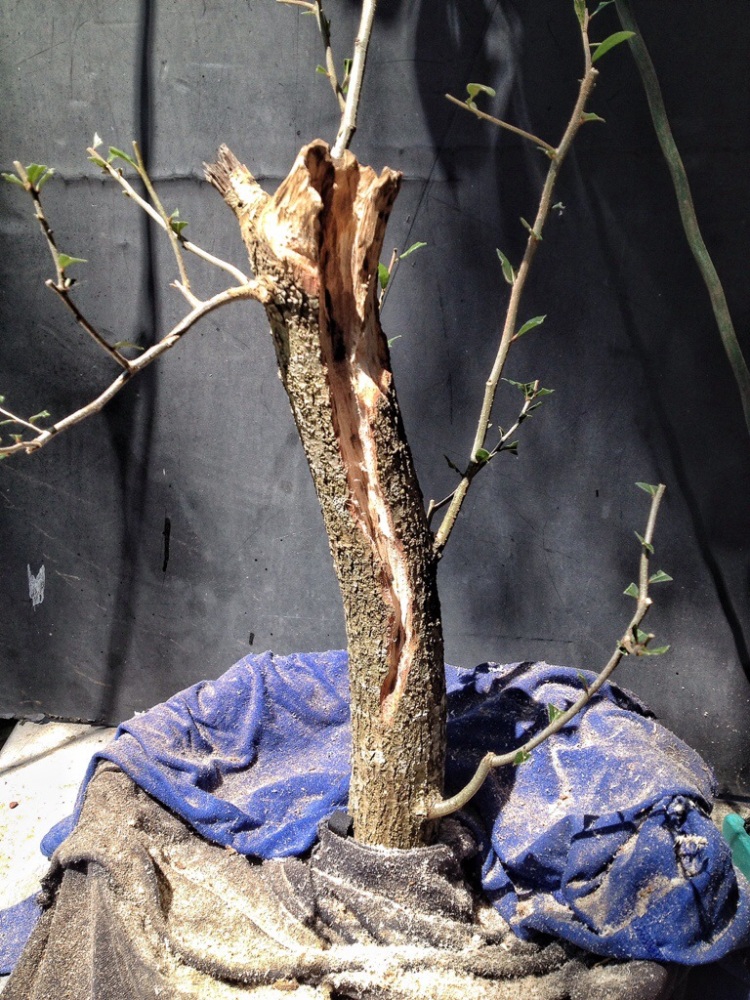
The look, if you can’t guess, is a lightening strike, with that groove down the front.

I hollowed out the knob and reduced it to improve the taper.
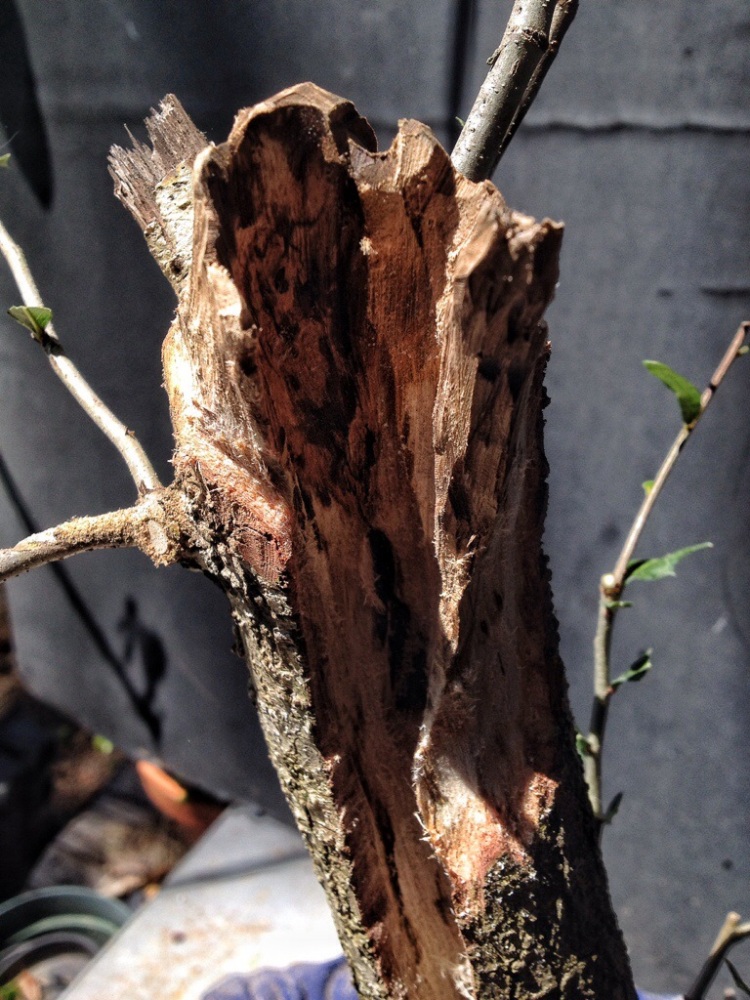
This isn’t the final carving, I used just my large rotosaw on the die grinder.
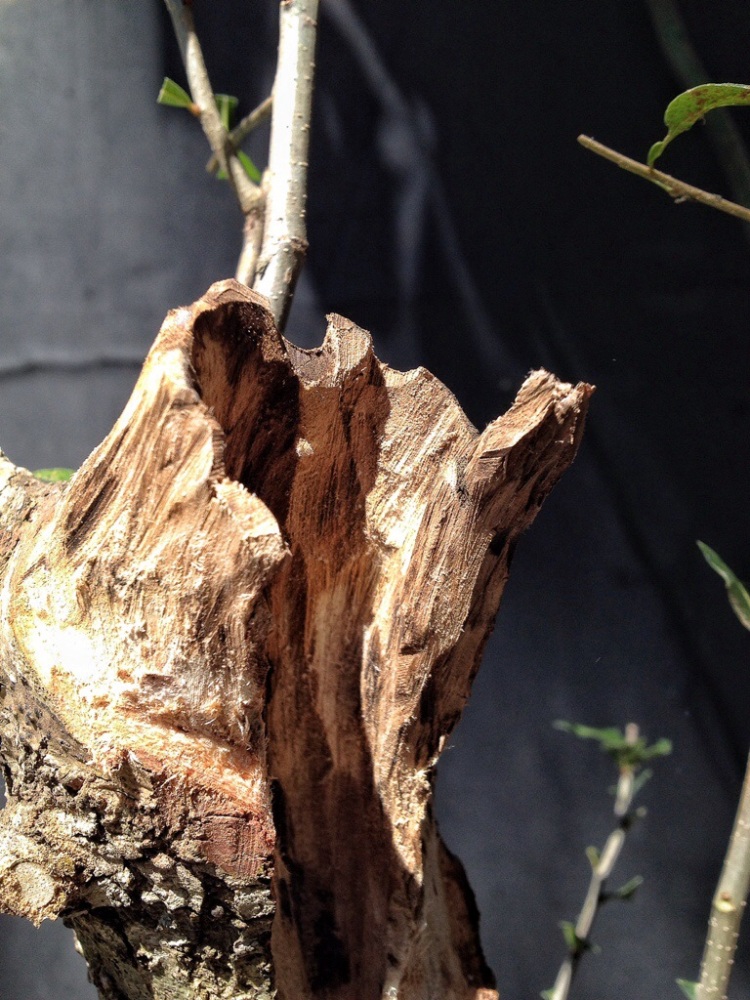
I will let the wood season a bit before I go in and finish.
And no lime sulfur yet.
I left the natural Jin on top.
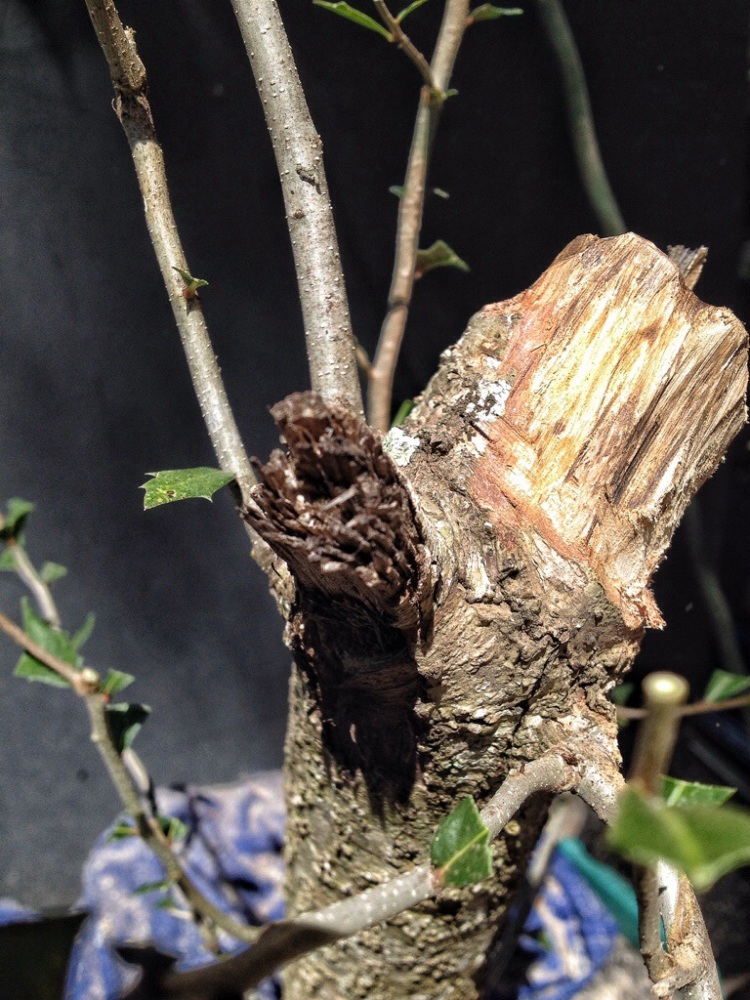
I think it looks cool.
It’ll lose definition as it ages but for now, I like it.
Some wire and…
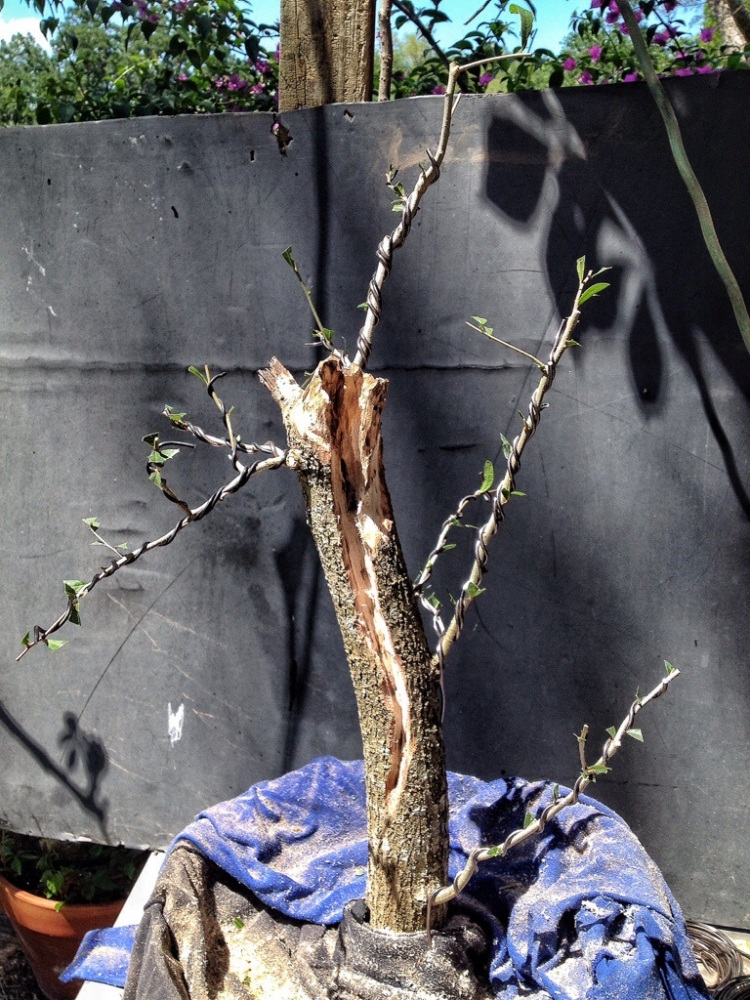
Some magic….
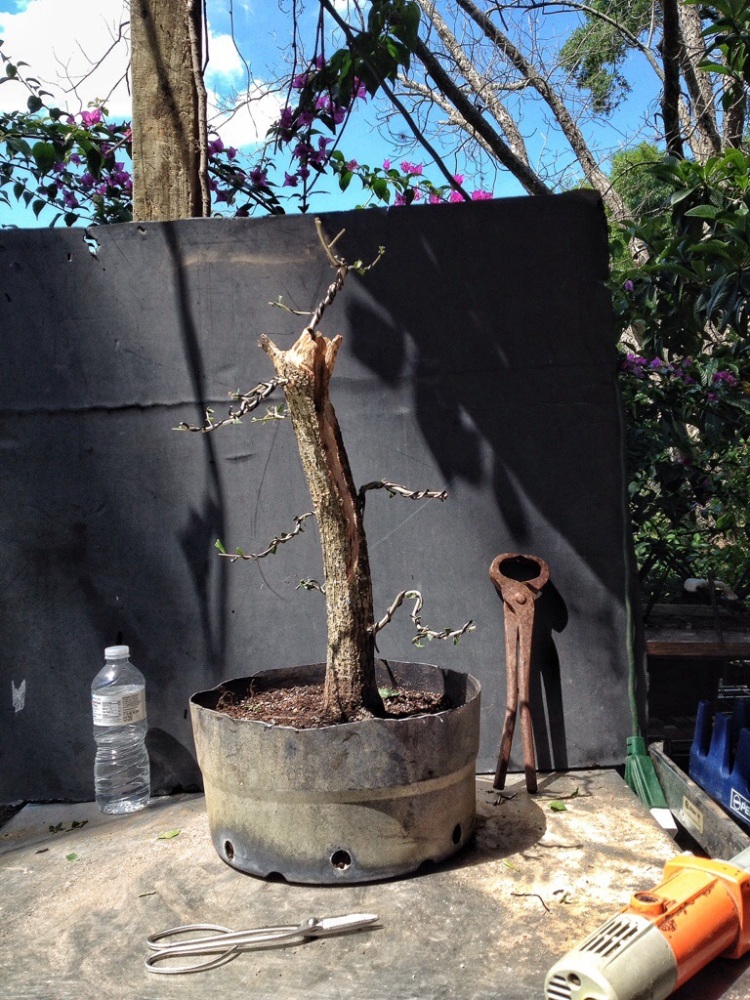
Not so much.
Let me ponder a bit and think why this doesn’t look right.
This is the base, not too bad, there are some roots that will thicken up a bit and the back nebari isn’t bad.
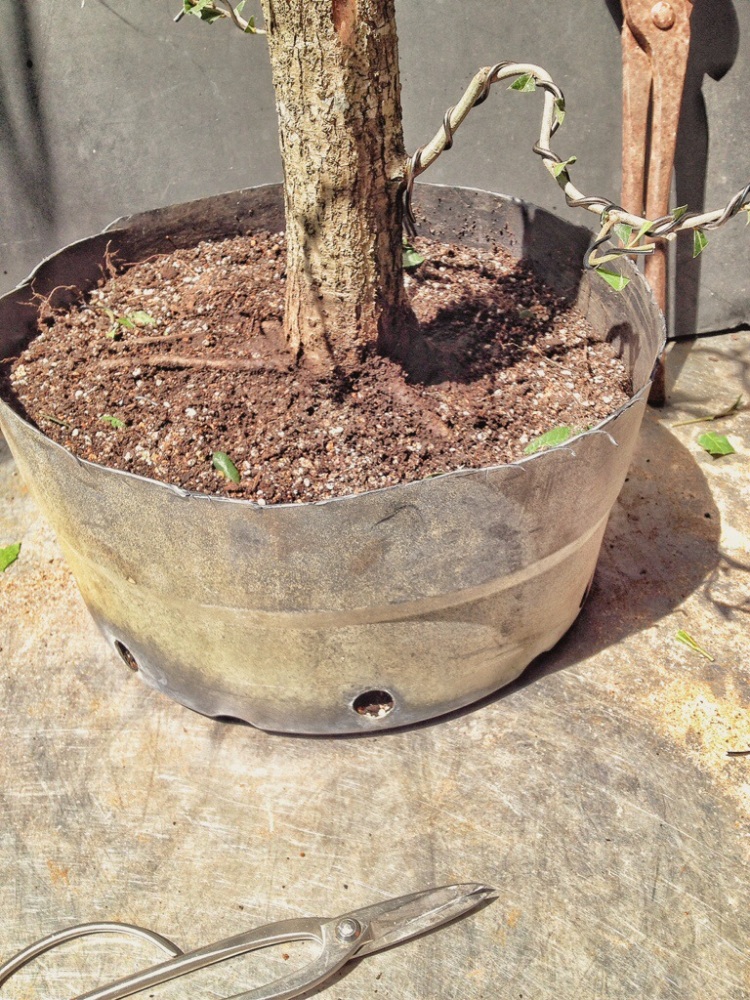
Ok, after a beer or two (hey, I’m done carving) this is my critique.
The first branch is too low, and too small. It just doesn’t belong.
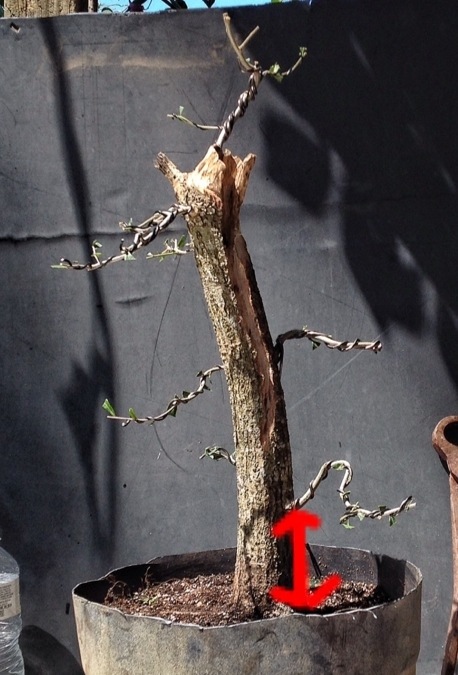
That would make the back branch the first branch.
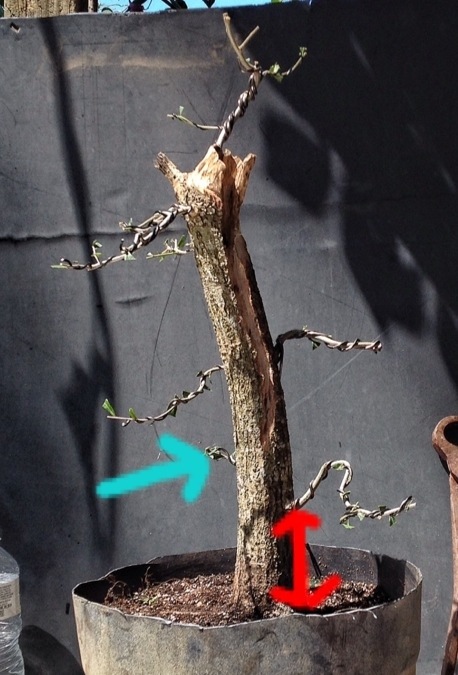
That doesn’t bother me too much except in this instance, it’s too much of a back branch.
The next two are at the same level on the tree.

Otherwise called “bar branches”.
Those are bad for artistic reasons; it effectively stops the eye at that point of intersection and keeps you from seeing what is above or below.
Next, the top is not quite right.
Too straight, I think.

Let me see what I can do…

Prune, snip, bend, trim….
And now…..magic!
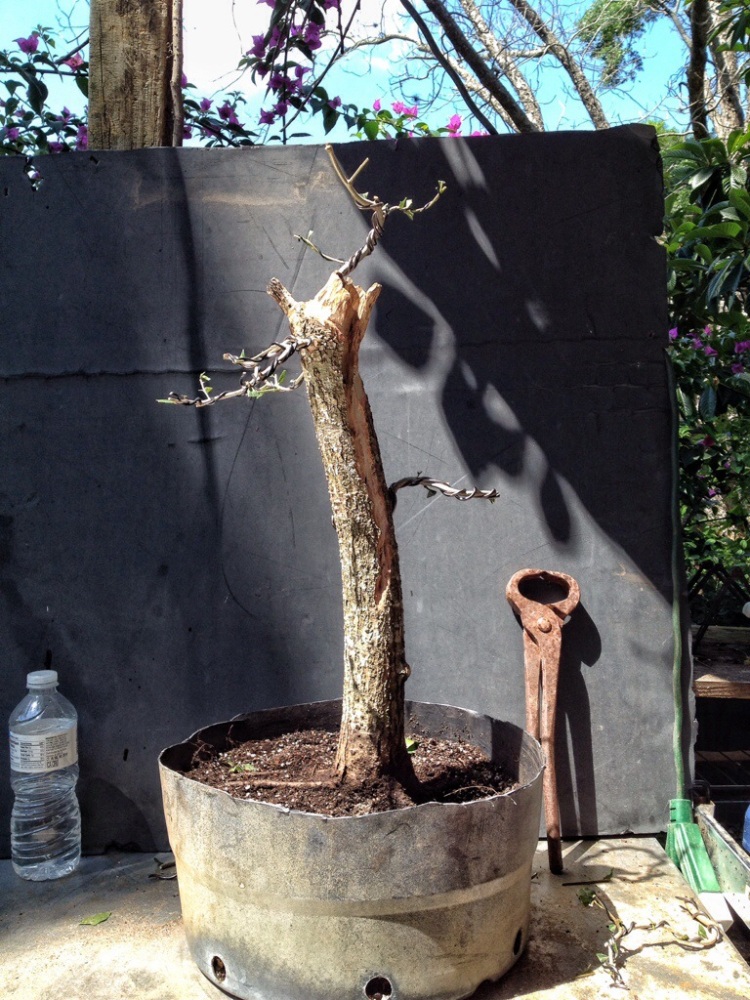
Better right?
Yes, that’s all I could bend the top branch, it is an oak if you don’t recall.
It’s not a juniper.
Here’s the back.

Can you see the future tree?
This sketch should help.
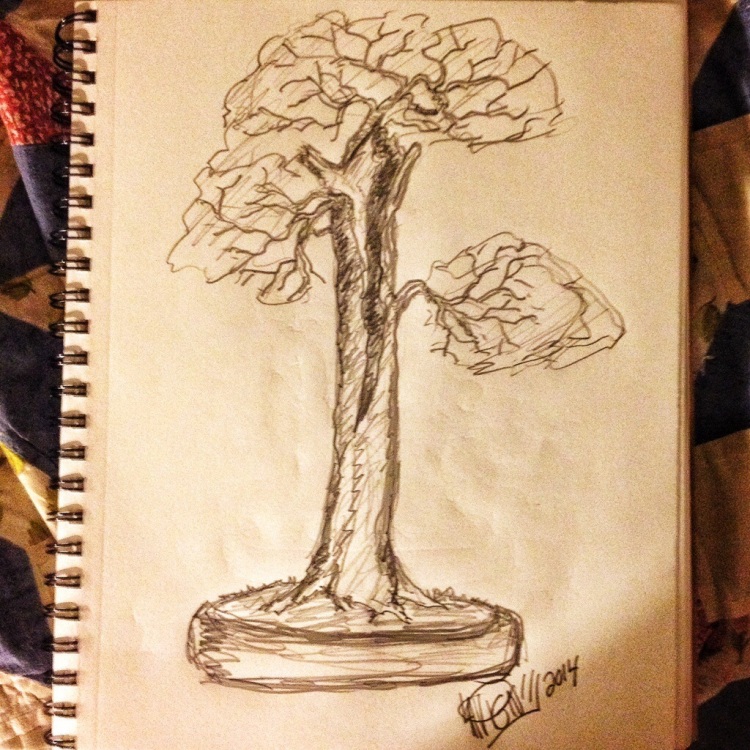
The carved edge should start rolling over soon, oaks are known for that.
They will develop fast and ramify well if you keep trimming and wiring them.
If you let them grow you’ll just get long branches with long internodes.
Don’t be afraid to push these trees, they’re tough. They survive hurricanes after all.
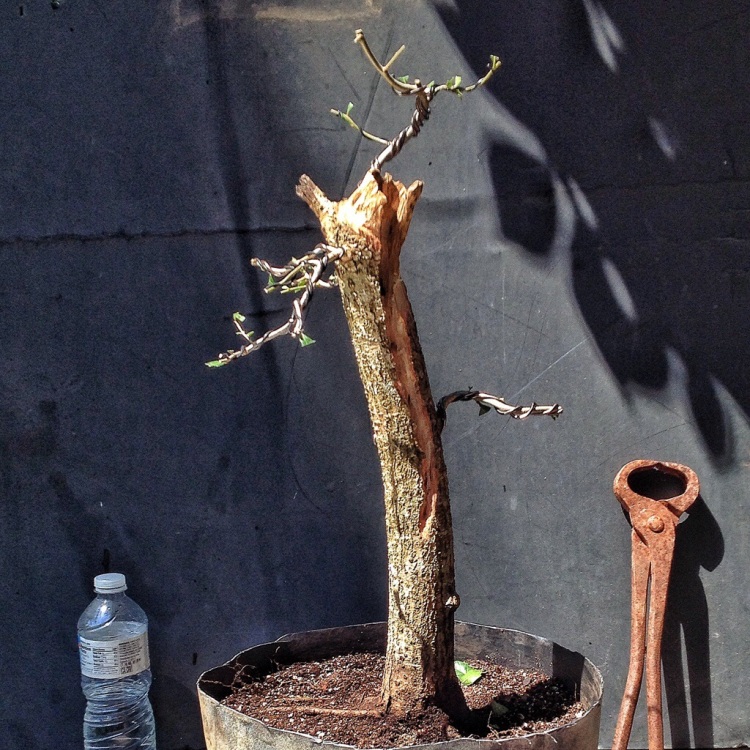
I’ll keep you posted.
- Comment
- Reblog
-
Subscribe
Subscribed
Already have a WordPress.com account? Log in now.
May I please see a photo of this tree now? …The southern live oak you were trimming and drawing future sketches of in 2014. It was in a metal bucket then.
Thank you so much! I enjoy your bonsai writings and photos very much.
😊 Mindy
LikeLike
Mindy, you are in luck! This tree will be featured in the next post so your wait will soon be over.
LikeLike
Can the oak be root pruned hard like other deciduous trees such as American Elm and Hackberry?
LikeLike
To a degree they can. But the best time to collect is in the fall
LikeLike
I’m passionate about oaks and am trying to turn many species into bonsai. My hardest time is working on the roots; they want to be long and don’t seem to ramify as well as the branches. Any tips? Also, when is the best time to repot and also when is the best time to defoliate? I live in Houston, TX
LikeLike
It’s tough to give you timing as your climate zone will be different.
If you are talking the “live” oaks, those that hold their leaves until that one week in spring, you can repot from about November until they put out new leaves. If they are deciduous like a white oak or laurel oak I’d wait until early spring.
It will take yearly repots to ramify the roots.
Defoliate from late May through early July. That’s when the best time to work deciduous trees other than early spring.
LikeLike